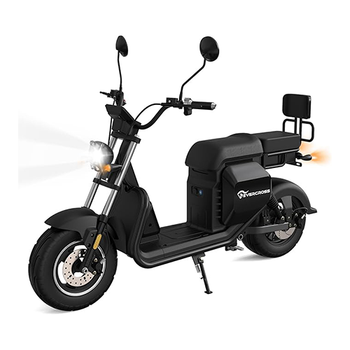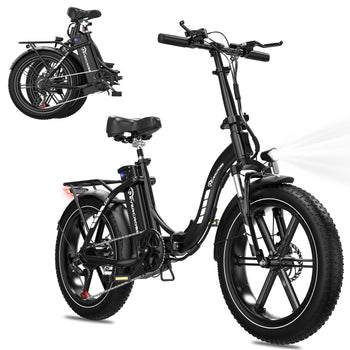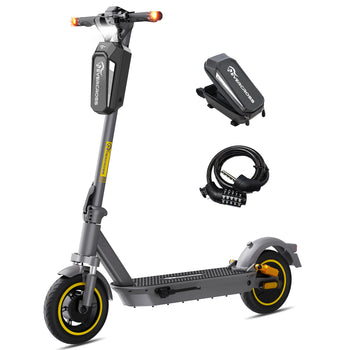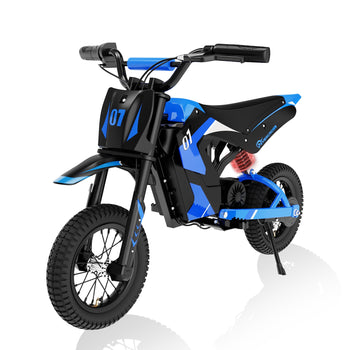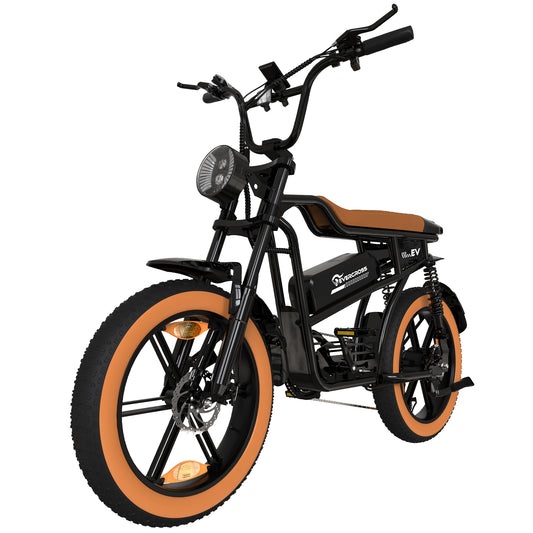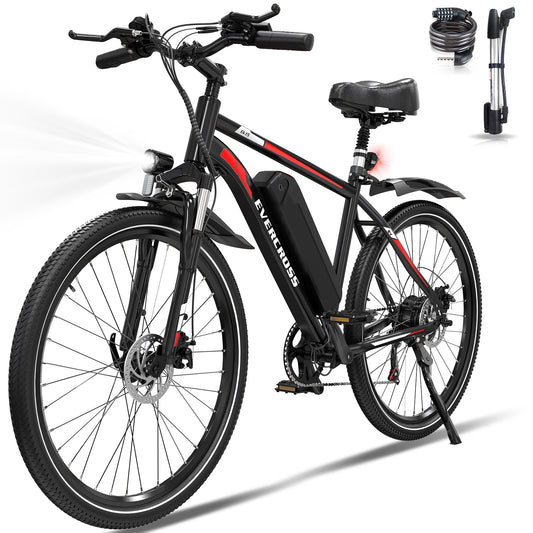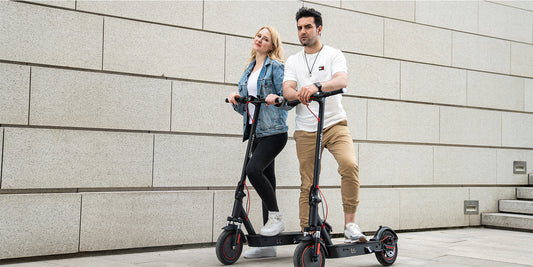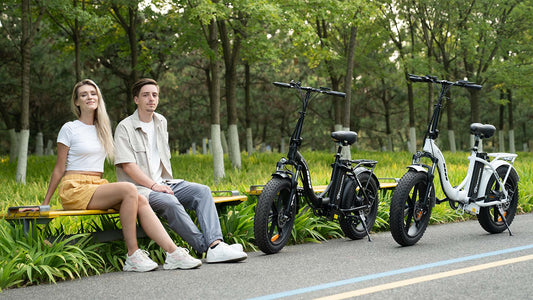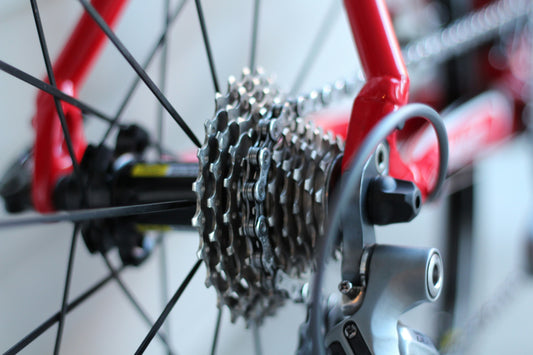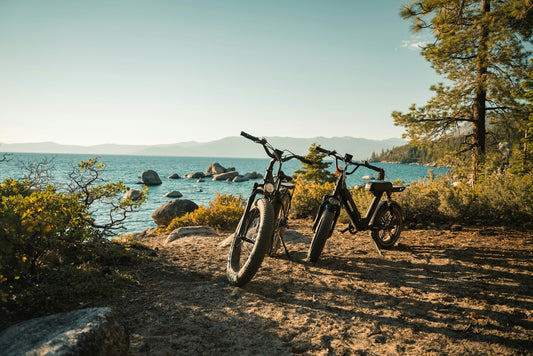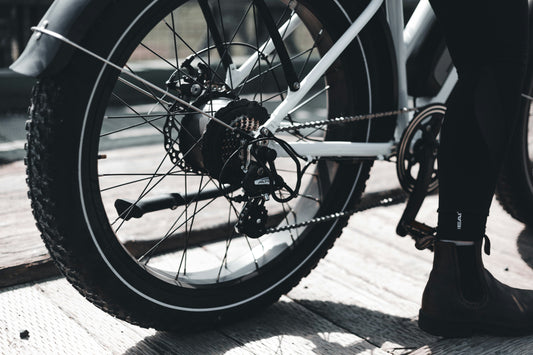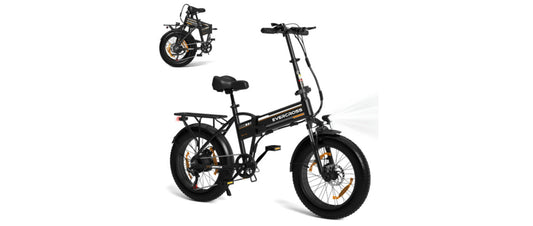Explore the ultimate performance and convenient experience of EVERCROSS EV10K MAX electric scooter
1. Introduction to the EVERCROSS EV10K MAX
- Brand and Model: Introducing the EVERCROSS brand and its latest model, the EV10K MAX.
- Core Specifications: The EV10K MAX is equipped with a 400W motor, a 15.6AH battery, weighs 20KG, and has a maximum load capacity of 120KG. It features dual brakes, dual shock absorbers, traction control (ABE), and power-assisted steering.
2. Pros and Cons Analysis
Pros:
- Powerful Motor: The 400W motor provides strong power, suitable for various terrains.
- High Battery Capacity: The 15.6AH battery ensures long rides without frequent charging.
- Safety Features: Dual braking system and dual shock absorbers enhance riding safety and comfort.
- Smart Features: Equipped with a display screen and the EVERCROSS PRO APP for real-time monitoring and adjustments.
- Multiple Speed Modes: Three adjustable speeds (10km/h, 15km/h, 20km/h) to meet different needs.
- Night Riding: High-brightness LED indicator lights, backlight covers, and guards ensure safer night riding.
Cons:
- Weight: At 20KG, it might be considered heavy for some users.
- Price: The high configuration may lead to a higher price, which could be a consideration for budget-conscious buyers.

3. Usage Scenarios and Applications
- Urban Commuting: Ideal for short trips to work, school, or shopping.
- Recreational Use: Suitable for park rides, suburban outings, and leisure activities.
- Shared Scooters: Discuss the convenience and market applications of shared electric scooters.
4. Buying and Selection Guide
- Key Specifications: Features a durable, waterproof lithium battery, a range of up to 65 kilometers, a top speed of 20 kilometers per hour, and a load capacity of 120KG.
- Price Range: Our store offers a variety of products to choose from, allowing you to select the electric scooter that fits your budget.
5. Usage and Maintenance Tips
- Usage Tips: The EV10K MAX features safety settings requiring the scooter to be set to a speed bump of 5km/h (3MPH) before the motor starts.
- Maintenance: Regularly check the battery, motor, tires, and braking system to ensure stable performance. We have repair shops and warehouses in many countries, including the USA, France, Germany, Italy, and Poland.
6. Safety and Regulations
- Safe Riding: Wear a helmet and protective gear, follow traffic rules, and use the LED headlights for safe night riding.
- Legal Regulations: Information on the legal requirements for electric scooters in different countries and regions to ensure compliant usage.
USA
- Federal Level: No unified federal law; states and cities set their own regulations.
- California: Riders must be at least 16 years old and wear a helmet. The maximum speed limit is 15mph (about 24km/h), and riding on sidewalks is prohibited. Scooters can only be used on roads with a speed limit of 25mph (about 40km/h) or lower.
- New York State: A 2020 law allows electric scooters under certain conditions. The maximum speed limit is 20mph (about 32km/h). Riders must be at least 16 years old, and those aged 16-18 must wear a helmet.

Europe
- Germany: Since June 2019, electric scooters are allowed on public roads under the Small Electric Vehicle Ordinance (eKFV). Scooters must have brakes and a bell, with a maximum speed of 20km/h. Riders must be at least 14 years old, and riding on sidewalks is prohibited.
- France: Regulations from 2019 limit the maximum speed of electric scooters to 25km/h. Riders must be at least 12 years old. Riding on sidewalks is prohibited; scooters must be used on bike paths or roads with a speed limit below 50km/h. Reflective clothing or front and rear lights are required for night riding.
- UK: Currently, electric scooters can only be used on private property. Public roads and sidewalks prohibit their use. Since 2020, some cities have been piloting shared electric scooters, allowing legal riding in designated areas.
Asia
- China: National legislation is yet to be established, and many cities prohibit electric scooters on public roads. Some cities like Shenzhen have pilot zones permitting their use under specific technical and safety standards.
- Japan: Electric scooters are classified as motor vehicles, requiring registration and insurance. Riders must have a driver’s license, and scooters must have rear-view mirrors, turn signals, and license plates. The maximum speed limit is 15km/h.
Australia
- New South Wales: Electric scooters are illegal on public roads and sidewalks, only permitted on private property.
- Queensland: Permits electric scooters on public roads and sidewalks with a maximum speed limit of 25km/h. Riders must wear helmets, and front and rear lights are required for night riding.
Canada
- Ontario: A five-year pilot program started in 2020, allowing electric scooters on roads with a speed limit below 50km/h. Riders must be at least 16 years old, with a maximum speed limit of 24km/h. Helmets are required for riders aged 16-18.
- British Columbia: Electric scooters are only allowed on private property; public road use is illegal.
Electric scooter laws vary by country and region. Generally, safety is the main legislative concern, including speed limits, rider age, helmet use, and riding areas. Understanding local laws is crucial for legal and compliant electric scooter use.

7. Technology Development Trends
New Technologies: Advances in battery technology and smart features (such as GPS tracking and smart locks) are being increasingly applied to electric scooters.
8. Environmental Impact
Electric scooters offer significant environmental advantages in reducing carbon emissions, lowering energy consumption, alleviating traffic congestion, reducing noise pollution, and supporting green travel. Promoting and popularizing electric scooters can effectively drive sustainable urban development, improve residents' living environments, and achieve a more environmentally friendly and healthier future transport model.


